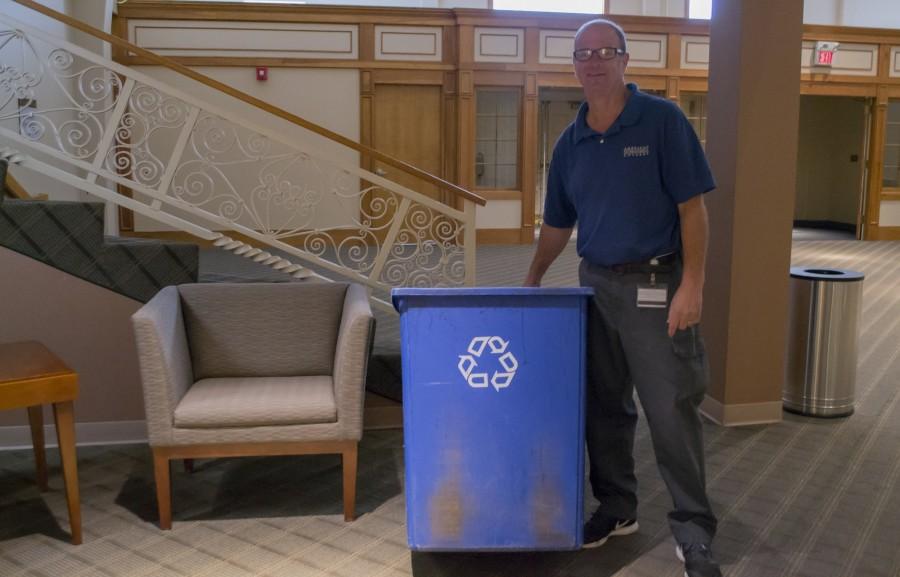Where Does All the Waste Go at AIC?
AIC’s celebrity custodian “Moose” is doing his part.
January 22, 2016
American International College has a mystery that no one seems to know or care to ask about. Where does all the waste go after we put in the trash? What is the next step?
AIC has approximately 3,000 students and facultynd each and every one of them contribute to the amount of waste.
Many students never think of what happens to the trash after it leaves their hands and goes into the garbage can.
Elizabeth Williams, a sophomore at AIC, says “I don’t know what happens to the waste but I do know that there is a lot of it, especially from the DC. I just hope that it’s being put to good use and not wasted.”
Dawn Shaw, a senior at AIC, had a similar feeling, commenting: “it never pops to my head what happens to the trash after they take it away.”
The grounds and maintenance crews work as hard as possible to keep the campus looking the best it can be. Most of the time, we just take their work for granted and never think about the aftermath of their work. The mysteries are what they do with the leaves that are collected during the fall season, the trash that piles up throughout the year, and all the wasted food in the dining commons.
The grounds workers are in charge of all outdoor tasks such as: mowing the lawn, planting the plants, raking the leaves, putting salt down during the winter, and emptying the recycling and trash bins. The maintenance workers work indoors; they are in charge of the inside trash bins, sweeping and mopping the floors, and cleaning the bathrooms.
Don Carter, the Director of Facilities at AIC, answers the question of what happens to all the waste. Carter overlooks all the custodial departments, the grounds departments, the trades and the maintenance departments, which includes the electricians and plumbers. He explains that there are specific dumpsters for each type of waste at AIC.
“It depends on how much [waste]. We do not actually generate as much as everyone thinks, we are actually under very minimal. If we exceed a certain amount we actually have a food dumpster, a small dumpster strictly for food waste,” Carter says.
As for what happens to the food waste from there?
“It is picked up from a company and is taken off site and is turned into fertilizer, pig feed, etc. If we have a very minimal amount of food waste it just goes into the general trash, which gets incinerated,” explains Carter. “Also, all of the cardboard and recyclables go in a separate dumpster and picked up from a different truck and is sorted and later made into consumer materials.”
According to Carter, the average amount of pick-ups for recyclables is four times a week, depending on the amount that is generated. The general waste that is produced from the dining commons is put into a compactor that is right outside of the building, and that machine compresses the waste to make more room.
As for the debris that accumulates on the ground around campus – including the fallen leaves, acorns and branches – there is a similar process.
These collected remains are put away into a pile that grows until it is finally time to be emptied. Once the pile of materials is large enough to be picked up, it is moved to a dumpster and later transformed into something else. AIC has a spot that they own that holds all of the rubble until the time has come to discard it. The area is off of Austin Street and is referred to as “The Yard.”
“All the ground debris gets stockpiled for now, and when it gets big enough for it to be picked up, it is usually turned into mulch, unless it has already decayed,” Carter says.
The company that picks up the leaves, Republic Services, is the same company that is responsible for picking up all the food, recyclables and regular garbage.
The disappearing rubble mystery has been solved. American International College takes great care of when the waste is taken and that the company that takes it will do it properly.



